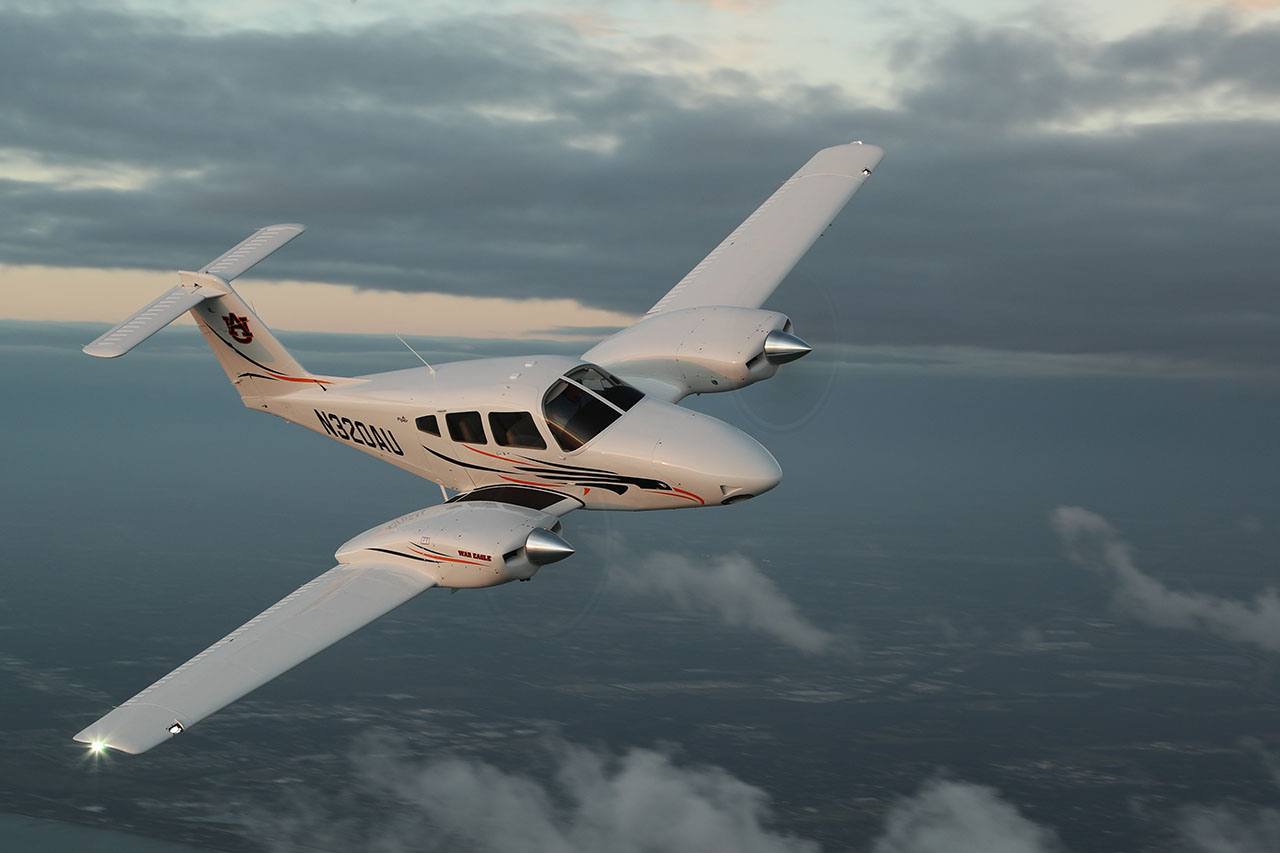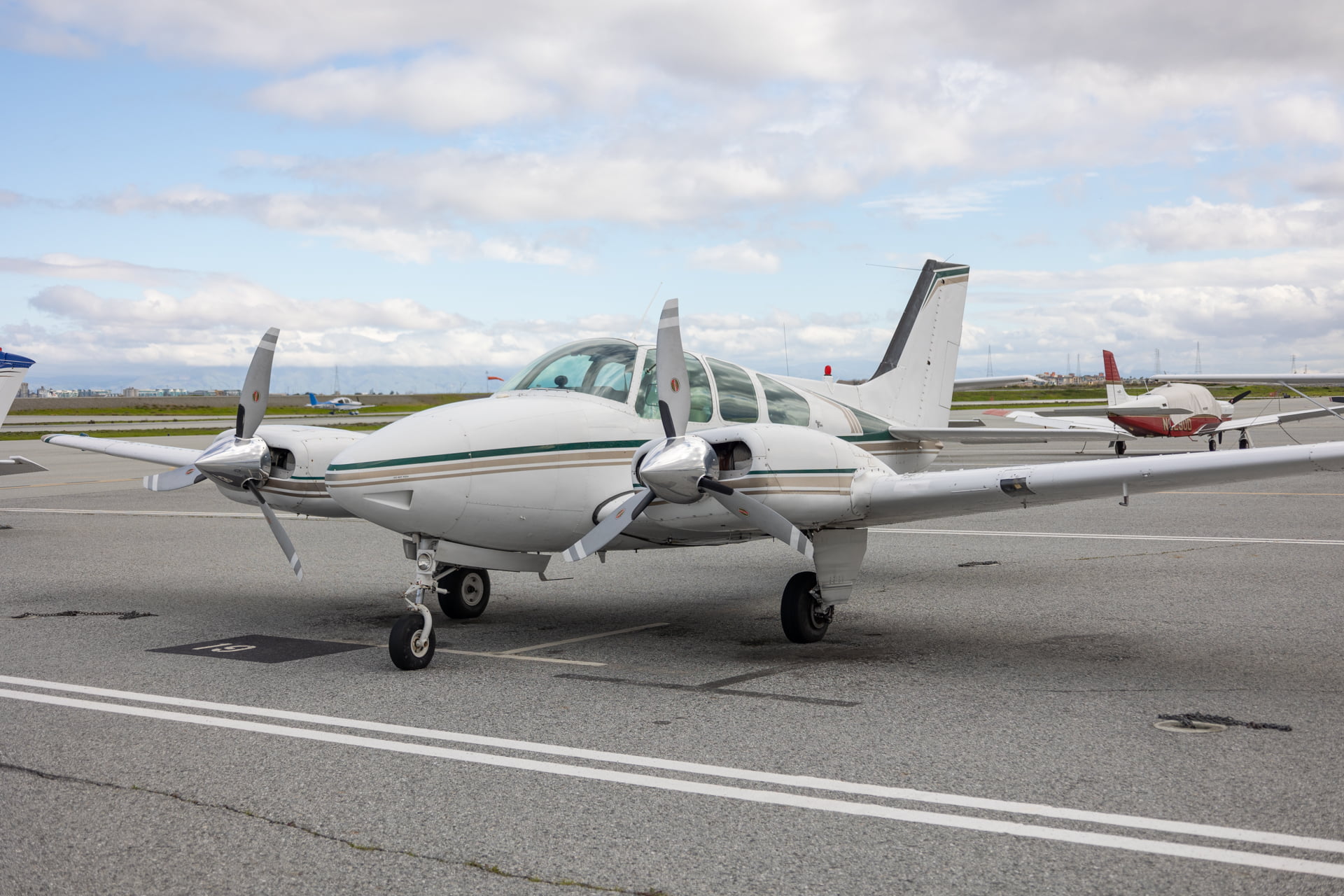Cessna 2-Engine Aircraft - The Skycourier was expected to enter service in 2020. In March 2018, initial tests in the wind tunnel were performed and accomplished. The maiden flight was initially set for 2019 and the design will be certified to FAR Part 23 standards.
On May 17, 2020, the SkyCourier took its first flight from Beech Factory Airport, with its senior test pilot Corey Eckhart and chief test pilot Aaron Tobias. During the 2-hour and 15-minute flight, the aircraft was tested for its performance, stability and control, propulsion, environmental, flight controls and avionics systems.
Cessna 2-Engine Aircraft

The Model 435 has the same dimensions as the 441 Conquest II. It has an exterior length of 11.9 meters, an exterior height of 2.2 meters, a tail height of 4 meters, and a fuselage diameter of 1.6 meters.
Conquest Ii Cabin And Avionics
The fuselage diameter is 1.6 meters, the wingspan is 15 meters, and the wing area is 23.56 square meters. The cabin length is 3.9 meters, the cabin height is 1.3 meters, and the cabin width is 1.4 meters.
The aircraft can seat eight to ten passengers and one or two pilots. The initial autopilots installed on the aircraft were still being used by most of the Conquest IIs; however, the last twenty aircraft produced were installed with Sperry SPZ500s to provide better assistance for the pilot and to reduce workload.
Retrofits are mainly the Rockwell Collins APS-65 or the S-Tec 2100. Several operators had made the switch when Reduced Vertical Separation Minima (RVSM) altimeters were installed which were required for an aircraft to fly above 28,000 feet.

A full upgrade in avionics incorporates SiriusXM satellite weather radars for full coast-to-coast coverage without altitude limitations, RVSM altimeters, Global Positioning System (GPS), and Terrain and Traffic Collision Avoidance System (T2CAS) that provides avoidance alerts based on the Conquest
Model
II's ability to climb. The aircraft can also be installed with an Avidyne/S-TEC Alliant integrated glass panel system. On November 28, 2017, Textron Aviation unveiled a new large utility turboprop designated as Model 408. The aircraft's configuration was built to fit FedEx Express requirements.
The largest express transportation company in the world, FedEx Express has signed on as the launch customer for up to one hundred aircraft, with an initial fleet order of fifty cargo aircraft and options for an additional fifty.
The SkyCourier is a twin-engine, high-wing, large utility turboprop built for high utilization operations. It will be offered in a 19-passenger version incorporating large round cabin windows for greater views and separate crew and passenger doors for smooth boarding, or in a cargo version which features a large cargo door and a flat floor cabin sized for three LD3 shipping containers
and 6,000 pounds of maximum payload, with a maximum cruise speed of 200 knots and a maximum range of 900 nautical miles. Both versions will provide single-point pressure refueling to allow faster turnarounds. The Cessna 408 Skycourier is a twin-turboprop, high-wing, utility aircraft under development by Textron Aviation.

Conquest Ii Notable Accident
It took to the skies for the first time on May 17, 2020, powered by Pratt and Whitney Canada PT6A-65SC engines. The 441 Conquest II was purposely produced to fill the gap between Cessna's jet and piston engine aircraft.
It is the first turboprop-engine aircraft designed and manufactured by Cessna in the 1970s. With a range of approximately 2,200 nautical miles and a relatively low cost, the Conquest II was an unparalleled aircraft in its time.
The initial design from 1972 for the Cessna 441 Conquest II was designated as the Model 435. A prototype the same as the 441, the Model 435 was intended to be powered with GTSIO-520 engines by Teledyne Continental Motors.
It is a six-cylinder, horizontally opposed engine with an overhead valve train, TCM fuel injection, and an air-cooling system. Each engine produces a maximum thrust of over 300 horsepower. The powerplant is also equipped with three-bladed propellers.
Conquest Ii Engine And Performance
In 1975, the 435 design developed into the Model 441, a turboprop-powered aircraft. It was a development of the Cessna 404 Titan. On August 19, 1977, the Model 441 received its Federal Aviation Administration type certificate.

In 1983, the aircraft was renamed the Conquest II. Later models were designed with lighter weight four-bladed propellers by McCauley. In 1986, a Pratt and Whitney PT6A-112 turboprop-powered aircraft was flown but was not able to get into production.
On November 18, 2018, a flying Conquest II operated by Bismarck Air Medical was destroyed when it went out of control and broke out in-flight, resulting in an impact on an open field near Harmon, North Dakota.
The pilot, together with the flight nurse and the paramedic were fatally injured. The clean-sheet design of the SkyCourier will feature improved cabin flexibility and payload capability, excellent performance, and reduced operating costs compared to its rivals.
Model
The airframe is constructed from conventional aluminum materials and will be powered by two Pratt and Whitney Canada PT6A-65 turboprop engines with 1,100 horsepower of thrust each. The aircraft is also designed with fixed landing gear and Garmin G1000 avionics.
A pair of Garett TPE331 turboprop engines power the Conquest II. The compact, lightweight, and powerful engines provide unmatched performance, cost, and endurance. Upgraded versions into -10s have a maximum thrust of up to 1,000 shaft horsepower compared to the older -8 engines flat rated to 635 shaft horsepower.

The aircraft equipped with -10 engine has considerably increased its climb rate and improved cruise speed at altitude. The engine is a single-shaft turboprop with integral gearbox, two-stage centrifugal compressors, reverse annular combustor and a three-stage axial turbine.
In the course of the 1960s, Cessna began to develop its 400 series of piston twins; subsequently, in 1972, the company launched the first Citation fanjet. However, the Arab oil embargo in 1973 and the persistent demand of competing turboprop aircraft prompted the company to convert two of its piston twin aircraft into turboprops.
Conquest Ii Design
The Conquest II can fly up to 35,000 feet with a cruise speed of 295 knots. It has a maximum speed of 300 knots at 16,000 feet, a climb rate of 2,435 feet per minute, and a 2,194 nautical mile range.
It can take off and land at a distance of 1,341 meters and 890 meters respectively. The aircraft has a maximum takeoff weight of 4,467 kg, a maximum landing weight of 4,245 kg, a maximum payload of 1,039 kg, and a fuel tank capacity of 475 US gal.
By 1975, the prototype was further developed and evolved into a turboprop-powered aircraft, designated as the Model 441. On August 19, 1977, it was awarded the Federal Aviation Administration type certification. In 1983, the manufacturing company renamed the Model 441 as the Conquest II.

The Conquest II has a length of 11.89 meters, a height of 4 meters, and a fuselage diameter of 1.6 meters. It has a wingspan of 15.04 meters and a wing area of 23.56 square meters.
Upgraded versions were designed with winglets for an increase in speed and better stability about the roll axis. Cessna made numerous enhancements on the Conquest II. Most of the fleet has been upgraded to Garrett TPE331-10 engines because of the excellent performance and maintenance intervals.
The initial fiberglass exhaust portion is susceptible to cracking that made stainless exhausts another favored option. The three-blade propellers were converted to four-blade Hartzell propellers that yield 2.5 inches more ground clearance, decrease noise in the cabin, improve the rate of climb, and increase the airspeed.
cessna twin engine plane, twin engine cessna 208, cessna 440 twin engine airplane, cessna 441 engine, used twin engine cessna, cessna 441 conquest, twin engine cessna, cessna 2 engine planes